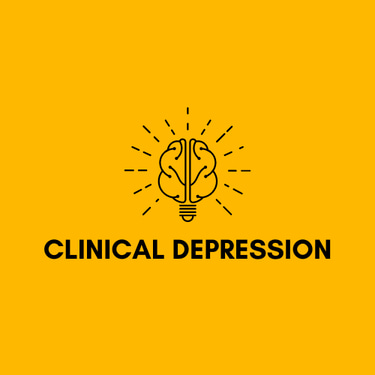For Questions: Text (833)233-0869
Neurofeedback Therapy for Anxiety: A Comprehensive Guide


Anxiety is one of the most common mental health disorders worldwide, affecting millions of people. From mild nervousness to debilitating panic attacks, anxiety can manifest in various forms, making life challenging for those who suffer from it. Traditional treatments, such as medication and cognitive-behavioral therapy (CBT), have proven effective for many. However, not everyone responds well to these approaches. In recent years, Neurofeedback Therapy for Anxiety has emerged as a promising alternative treatment. This non-invasive method has shown potential in helping individuals manage anxiety symptoms by retraining the brain to function more optimally.
In this comprehensive guide, we will explore neurofeedback therapy in depth, how it works, its benefits, and why it could be a game-changer in the treatment of anxiety.
What is Anxiety?
Anxiety is a natural response to stress, characterized by feelings of worry, fear, or apprehension. While occasional anxiety is normal, chronic anxiety can be debilitating and affect various aspects of life, including work, relationships, and overall well-being.
Types of Anxiety Disorders
Generalized Anxiety Disorder (GAD): Persistent and excessive worry about various aspects of life.
Panic Disorder: Recurrent and unexpected panic attacks.
Social Anxiety Disorder: Intense fear of social situations.
Specific Phobias: Irrational fears of specific objects or situations.
Obsessive-Compulsive Disorder (OCD): Repetitive, intrusive thoughts and behaviors.
Post-Traumatic Stress Disorder (PTSD): Anxiety following a traumatic event.
Traditional Treatments for Anxiety
1. Medications
Antidepressants: Such as SSRIs (Selective Serotonin Reuptake Inhibitors) like Prozac or Zoloft.
Benzodiazepines: Such as Xanax or Valium, which provide short-term relief.
Beta-blockers: Help control physical symptoms like rapid heartbeat.
2. Therapy
Cognitive-Behavioral Therapy (CBT): Focuses on changing negative thought patterns.
Exposure Therapy: Gradual exposure to anxiety-inducing situations.
Psychodynamic Therapy: Delves into the root causes of anxiety.
While these treatments are effective for many, they are not without drawbacks. Medications can have side effects, and not everyone responds to therapy. This is where Neurofeedback Therapy for Anxiety comes into play as an innovative option.
What is Neurofeedback Therapy?
Neurofeedback, also known as EEG biofeedback, is a type of biofeedback that uses real-time displays of brain activity to teach self-regulation of brain function. It is based on the idea that the brain can learn to change its patterns of activity, much like how one can train muscles through exercise.
How Does Neurofeedback Work?
Brain Mapping (QEEG): The process begins with a quantitative electroencephalogram (QEEG), which maps the brain's electrical activity. This helps identify irregular brainwave patterns associated with anxiety.
Training Sessions: During a neurofeedback session, sensors are placed on the scalp to monitor brainwave activity. The patient is then shown a visual representation of their brainwaves on a screen, such as a video game or movie. The goal is to modify brainwave activity through real-time feedback.
Reinforcement: Positive changes in brain activity are rewarded. For instance, if the brain produces the desired brainwave patterns, the game progresses or the movie plays smoothly. This reinforcement encourages the brain to maintain the new, healthier patterns.
Over time, the brain learns to regulate itself, reducing anxiety symptoms.
The Science Behind Neurofeedback Therapy for Anxiety
The brain operates using different types of brainwaves, including alpha, beta, delta, and theta waves. Each of these brainwaves corresponds to different states of mind:
Alpha Waves (8-13 Hz): Associated with relaxation and calmness.
Beta Waves (13-30 Hz): Linked to active thinking and focus.
Theta Waves (4-8 Hz): Related to creativity and deep relaxation.
Delta Waves (0.5-4 Hz): Found in deep sleep.
In people with anxiety, there is often an imbalance in these brainwave patterns, particularly an overproduction of high-frequency beta waves, which are associated with hyperarousal and anxiety. Neurofeedback therapy aims to correct these imbalances, promoting relaxation and reducing anxiety symptoms.
Benefits of Neurofeedback Therapy for Anxiety
Non-Invasive and Drug-Free: Neurofeedback therapy does not involve medication, making it an attractive option for those who prefer a natural approach.
Personalized Treatment: Since neurofeedback is based on an individual's unique brainwave patterns, it offers a personalized treatment plan tailored to their specific needs.
Long-Lasting Effects: Studies suggest that the effects of neurofeedback therapy can be long-lasting, as the brain learns to maintain healthier patterns on its own.
Improves Overall Brain Function: In addition to reducing anxiety, neurofeedback therapy can improve concentration, memory, and emotional regulation.
Safe and Side-Effect-Free: Unlike medications, neurofeedback therapy has minimal side effects. Some patients may experience temporary fatigue or headaches, but these symptoms typically subside quickly.
Neurofeedback Therapy vs. Traditional Treatments for Anxiety
While traditional treatments like medication and CBT focus on managing symptoms, neurofeedback therapy aims to address the root cause of anxiety by retraining the brain. Here’s how neurofeedback compares to other treatments:
1. Neurofeedback vs. Medication
Medication: Provides symptom relief but may come with side effects and dependency issues.
Neurofeedback: Offers long-term benefits without the risk of side effects or dependency.
2. Neurofeedback vs. CBT
CBT: Focuses on changing thought patterns and behaviors, which can be effective but may require a significant time commitment.
Neurofeedback: Works directly on brain function, which can lead to faster and more sustained improvements.
3. Neurofeedback as a Complementary Treatment
Neurofeedback can be used alongside traditional treatments, enhancing their effectiveness and potentially reducing the need for medication.
The Research Behind Neurofeedback Therapy for Anxiety
Neurofeedback therapy has been the subject of various studies, with promising results for anxiety treatment.
A 2018 Study on Generalized Anxiety Disorder (GAD): This study found that participants who underwent neurofeedback therapy showed significant reductions in anxiety symptoms compared to a control group. The effects were sustained even after the treatment ended.
A 2020 Meta-Analysis: This comprehensive review of multiple studies concluded that neurofeedback therapy is an effective treatment for anxiety disorders, particularly when tailored to individual brainwave patterns.
Clinical Trials: Ongoing clinical trials continue to explore the efficacy of neurofeedback therapy for anxiety, with many showing positive outcomes.
What to Expect During Neurofeedback Therapy
If you're considering neurofeedback therapy for anxiety, here's what you can expect during the process:
1. Initial Assessment:
The process begins with a thorough assessment, including brain mapping (QEEG) to identify irregular brainwave patterns.
2. Personalized Treatment Plan:
Based on the assessment, a personalized treatment plan is developed. This plan outlines the number of sessions needed and the specific goals of the therapy.
3. Training Sessions:
During each session, you'll be seated comfortably while sensors are attached to your scalp. You'll then engage in activities like watching a movie or playing a game, which provide real-time feedback on your brain activity.
4. Progress Monitoring:
Progress is monitored throughout the treatment, with adjustments made as needed. As your brain learns to regulate itself, you'll likely notice a reduction in anxiety symptoms.
5. Post-Treatment Follow-Up:
After completing neurofeedback therapy, follow-up sessions may be recommended to ensure the brain maintains its new, healthier patterns.
Who Can Benefit from Neurofeedback Therapy?
Neurofeedback therapy is suitable for individuals with various types of anxiety disorders, including:
Generalized Anxiety Disorder (GAD): For those with persistent worry and tension.
Panic Disorder: For individuals experiencing frequent panic attacks.
Social Anxiety Disorder: For those with intense fear of social situations.
PTSD: For individuals struggling with anxiety following trauma.
Neurofeedback therapy may also benefit individuals who have not responded well to traditional treatments or who prefer a non-pharmacological approach.
Potential Risks and Considerations
While neurofeedback therapy is generally considered safe, there are a few potential risks and considerations to keep in mind:
Temporary Side Effects: Some individuals may experience mild side effects, such as headaches or fatigue, following sessions. These effects are typically short-lived.
Cost: Neurofeedback therapy can be expensive, with sessions ranging from $100 to $300 each. Since multiple sessions are usually required, the cost can add up.
Time Commitment: Neurofeedback therapy requires a significant time commitment, often involving 20-40 sessions to achieve optimal results.
Not a Quick Fix: While neurofeedback therapy can be effective, it is not a quick fix. Consistent effort and commitment are required to see lasting results.
How to Find a Neurofeedback Therapist
Finding a qualified neurofeedback therapist is crucial for a successful treatment experience. Here are some steps to help you find the right professional:
Check Credentials: Ensure the therapist is certified by a recognized organization, such as the Biofeedback Certification International Alliance (BCIA).
Ask About Experience: Inquire about the therapist's experience in treating anxiety with neurofeedback therapy.
Read Reviews: Look for reviews or testimonials from previous clients to gauge their experiences.
Consultation: Schedule a consultation to discuss your needs and determine if the therapist is a good fit for you.
Combining Neurofeedback with Other Therapies
While neurofeedback therapy can be effective on its own, many individuals find it beneficial to combine it with other therapies for a more comprehensive approach to anxiety treatment. Here are some therapies that can complement neurofeedback:
Cognitive-Behavioral Therapy (CBT): While neurofeedback focuses on brain function, CBT addresses negative thought patterns and behaviors.
Mindfulness and Meditation: Practices that promote relaxation and mindfulness can enhance the effects of neurofeedback therapy.
Exercise: Physical activity can help reduce anxiety and improve overall well-being, making it a great addition to neurofeedback therapy.
Nutritional Support: A healthy diet can support brain function and complement neurofeedback therapy.
Success Stories and Testimonials
Hearing from others who have benefited from neurofeedback therapy can be inspiring and provide insight into the potential outcomes. Here are a few success stories from individuals who have undergone neurofeedback therapy for anxiety:
Emily, 32: "I struggled with anxiety for years, trying different medications and therapies with limited success. Neurofeedback therapy was a game-changer for me. After just a few sessions, I noticed a significant reduction in my anxiety levels. I feel more in control of my thoughts and emotions now."
Mark, 45: "Panic attacks were a regular part of my life until I tried neurofeedback therapy. The sessions were relaxing, and over time, the attacks became less frequent and intense. I highly recommend it to anyone struggling with anxiety."
Sarah, 28: "I was skeptical at first, but neurofeedback therapy has made a huge difference in my life. It's amazing how retraining your brain can have such a positive impact on anxiety. I'm now able to manage stress better and feel more at peace."
The Future of Neurofeedback Therapy for Anxiety
As research continues to support the efficacy of neurofeedback therapy for anxiety, its popularity is likely to grow. Advances in technology may lead to more accessible and affordable options for those seeking this innovative treatment.
In the future, we may see neurofeedback therapy becoming a standard part of anxiety treatment plans, either as a standalone therapy or in combination with other approaches. As more individuals experience the benefits of this non-invasive, drug-free therapy, neurofeedback is poised to become a leading solution for anxiety relief.
Conclusion
Neurofeedback Therapy for Anxiety offers a promising alternative for those seeking a natural, non-invasive treatment option. By retraining the brain to function more optimally, neurofeedback therapy can help reduce anxiety symptoms and improve overall mental health. While it may not be a quick fix, the long-lasting effects and minimal side effects make it an appealing choice for many.
If you're struggling with anxiety and traditional treatments haven't provided the relief you need, neurofeedback therapy may be worth exploring. With the right therapist and a commitment to the process, you could find yourself on the path to a calmer, more balanced life.
Whether used on its own or in conjunction with other therapies, neurofeedback therapy is changing the way we approach anxiety treatment, offering hope to those who have long sought relief from this pervasive condition.
©2025
Clinical Depression
For Questions: Text
(833) 233-0869
